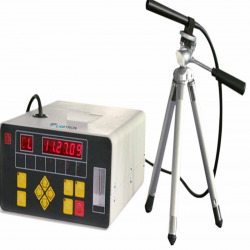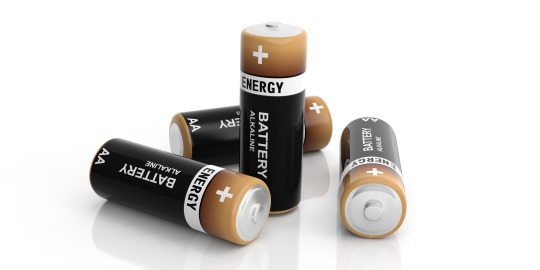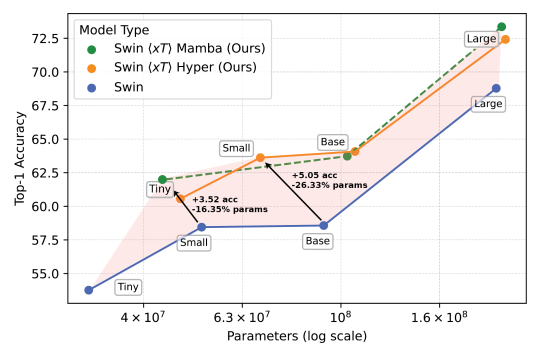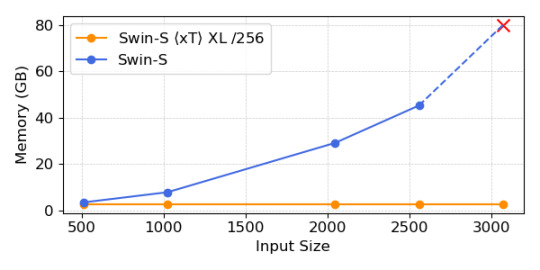#Environmental Monitoring
Text
Exploring the Diverse Landscape of Surveys: Unveiling Different Types
Introduction
Civil engineering, as a discipline, relies heavily on accurate and comprehensive data to design, plan, and construct various infrastructure projects. Surveys play a crucial role in gathering this essential information, providing engineers with the data needed to make informed decisions. There are several types of surveys in civil engineering, each serving a unique purpose. In this…

View On WordPress
#accurate measurements#as-built survey#boundary survey#civil engineering data#Civil engineering surveys#construction progress monitoring#construction survey#design accuracy#environmental monitoring#geodetic survey#global mapping#hydrographic survey#infrastructure development#infrastructure projects#land surveyor#legal boundaries#monitoring survey#project planning#property lines#structural integrity assessment#surveying in civil engineering#surveying innovations#surveying technology#topographic surveying#water body survey
2 notes
·
View notes
Text
A Botanical Marvel Unveiled: The First Prairie Pasqueflower at Richard St. Barbe Baker Afforestation Area

View On WordPress
#alkaline soil#biodiversity#Biodiversity Conservation#botanical discovery#botanical studies#city center#Community Engagement#concentric zonation#conservation#Conservation Biology#Conservation Efforts#cultivation challenges#Ecological conservation#Ecological Monitoring#ecological research#Ecological Resilience#Ecological Restoration#ecological significance#ecology#Ecosystem#ecosystem health#ecosystem management#ecosystem services#endangered ecosystems#environmental awareness#Environmental Education#environmental education programs#environmental impact#Environmental Management#Environmental Monitoring
0 notes
Text
Understanding Conductivity Meters
Electrical conductivity is a measure of a material’s ability to conduct an electric current. In the context of solutions, it refers to the capacity of the solution to transmit electrical flow, which is directly related to the presence of ions in the solution. A conductivity meter, therefore, is an essential tool that measures the electrical conductivity in a solution, providing insights into its…

View On WordPress
0 notes
Text
Groundbreaking Biomimetic Olfactory Chips Use AI to Enable Robots to Smell
New Post has been published on https://thedigitalinsider.com/groundbreaking-biomimetic-olfactory-chips-use-ai-to-enable-robots-to-smell/
Groundbreaking Biomimetic Olfactory Chips Use AI to Enable Robots to Smell
The development of artificial olfactory sensors has been a long-standing challenge for researchers worldwide. Creating electronic noses (e-noses) that can effectively discern complex odorant mixtures, similar to the biological olfactory system, has proven difficult due to issues with miniaturization and recognition capabilities. However, a research team led by Prof. FAN Zhiyong from the Hong Kong University of Science and Technology (HKUST) has made a significant breakthrough in this field with their newly developed biomimetic olfactory chips (BOC).
Biomimetic Olfactory Chips (BOC)
The biomimetic olfactory chips, or BOCs, developed by Prof. Fan’s team are a groundbreaking invention in the field of artificial smell detection. These tiny chips are designed to mimic the way humans and animals detect odors, making them more accurate and efficient than previous artificial olfaction systems.
Each BOC contains up to 10,000 tiny gas sensors, which are arranged in a way that closely resembles the biological olfactory system. This unique design allows the chip to detect and distinguish between a wide variety of odors, even when they are mixed together in complex combinations.
One of the key features of the BOC is its use of a special material composition that varies across the chip. This gradient design enables the integration of many different types of sensors on a single chip, making it possible to detect a broad range of odors while keeping the chip small and compact.
The gas sensors used in the BOC are incredibly sensitive and can detect even the slightest traces of various gases and volatile organic compounds (VOCs). These sensors are built on a substrate with tiny pores, which provides a large surface area for the gases to interact with, enhancing the chip’s sensitivity and response time.
By combining this advanced sensor technology with artificial intelligence algorithms, the BOC can process and interpret the data from the gas sensors, allowing it to identify and differentiate between different odors with remarkable accuracy.
Image: HKUST
Overcoming Challenges in Artificial Olfaction
Developing artificial olfaction systems has been a challenging task for researchers due to several key obstacles. One of the primary difficulties has been miniaturizing the system while maintaining its effectiveness. Traditional e-noses often require bulky equipment, making them impractical for many applications. The biomimetic olfactory chips developed by Prof. Fan’s team address this issue by integrating a large number of gas sensors on a single, compact chip.
Another significant challenge in artificial olfaction has been increasing the system’s recognition capabilities, especially when dealing with complex mixtures of odors. In real-world scenarios, odors are often composed of multiple gases and volatile organic compounds, making it difficult for conventional e-noses to accurately identify and quantify each component.
By leveraging advanced nanotechnology and artificial intelligence, the biomimetic olfactory chips can process and interpret data from the gas sensors more effectively than traditional e-noses. The use of machine learning algorithms enables the BOC to learn from past experiences and improve its odor recognition capabilities over time. This adaptability makes the BOC a powerful tool for various industries, as it can be tailored to detect and identify specific odors relevant to each application.
Exceptional Performance and Applications
In one notable demonstration, the researchers integrated the olfactory chips with vision sensors on a robot dog, creating a combined olfactory and visual system. This unique setup allowed the robot to accurately identify objects in blind boxes, showcasing the potential for integrating the BOC with other sensing technologies to create more advanced and capable intelligent systems.
Image: HKUST
The applications for the biomimetic olfactory chips are vast and span across multiple industries. In the food industry, the BOC can be used for quality control, detecting spoilage, and ensuring food safety. Environmental monitoring is another key application area, where the chips can be employed to detect harmful gases, pollutants, and other airborne contaminants.
The medical field can also benefit from the BOC technology, as the chips can be used to diagnose diseases by detecting specific volatile organic compounds (VOCs) in a patient’s breath or bodily fluids. This non-invasive diagnostic method could potentially lead to earlier detection and treatment of various illnesses.
In industrial settings, the biomimetic olfactory chips can be used to monitor and control processes, ensuring the safety and quality of products. The chips can detect gas leaks, monitor emissions, and identify potential hazards in real-time, allowing for quick responses and preventive measures.
The exceptional performance and wide-ranging applications of the biomimetic olfactory chips demonstrate their potential to revolutionize various industries. As the technology continues to advance, it is expected that the BOC will find even more uses in different sectors, improving safety, efficiency, and quality control in numerous processes.
#000#ai#Algorithms#Animals#applications#artificial#Artificial Intelligence#challenge#chips#Composition#data#Design#detection#development#Diseases#dog#efficiency#electronic#Emissions#employed#Environmental#environmental monitoring#equipment#Features#fluids#Food#gas#hazards#humans#Industries
0 notes
Text
Environmental Impact Assessment, Environmental Monitoring, and Environmental Services: The Use of “Conversational Approach” in Teaching
Environmental Impact Assessments (EIAs) play a crucial role in the planning of any venture with potential environmental ramifications. EIAs aim to analyze and mitigate the expected ecological impacts of a project before its implementation in a specific area. Environmental monitoring is an ongoing process that seeks to understand how projects affect the environment and assesses the effectiveness of implemented measures. For example, in an Environmental and Social Impact Assessment (ESIA), experts provide environmental services, recognizing the complexity of ecological issues and the global responsibility at hand.
EIAs go beyond paperwork; they are about ensuring the safety and sustainability of our planet for future generations. They involve a range of interventions, including environmental monitoring, modeling, management, and technical reporting guided by the practices of the UK oil and gas sector. EIAs serve as powerful instruments for project management, promoting responsible and sustainable environmental practices. They address high-profile decisions like those related to oil refineries or nuclear power stations and also consider small-scale initiatives with environmental repercussions.
Continuously evaluating environmental changes caused by project implementation is crucial for assessing the efficiency of applied measures and certifying project design principles that work across various situations. Environmental monitoring encompasses air and water quality testing, noise level monitoring, and wildlife census.
The environmental services provided involve contributions from experts with in-depth understanding of environmental complexities and the magnitude of the work required to protect the planet.
Most of their work revolves around environmental surveys, modeling, management actions, and providing technical reports tailored to prevailing UK ecological guidelines and standards.
Compared to larger projects, EIAs are essential not only for oil refineries or nuclear power plants but also for smaller projects with potentially significant environmental effects.
In summary, EIA, EIA, and ES are fundamental foundations for responsible and sustainable development projects. These services go beyond meeting current sustainability laws; they aim to create positive impacts on the planet. Implementing EIAs, environmental monitoring, and environmental services into our operations can ensure a problem-free project for the environment and future generations.
0 notes
Video
youtube
#Monitoring Biodiversity through eDNA with Dr. Kat Bruce
#youtube#biodiversity monitoring#biodiversity#genetic#genetic biodiversity#biodiversity research#wildlife monitoring#environmental monitoring#dna-based monitoring
0 notes
Text

Environmental Monitoring: A Comprehensive Guide
Blog Description:
Environmental monitoring is the process of measuring and tracking environmental conditions over time. It is used to assess the quality of the environment, identify and manage environmental risks, and evaluate the effectiveness of environmental policies and programs.
Environmental monitoring is important for a number of reasons. It can help us to:
Identify and track environmental trends, such as climate change and air and water pollution.
Understand the impact of human activities on the environment.
Develop and implement effective environmental management strategies.
Ensure compliance with environmental regulations.
There is a wide range of environmental monitoring techniques available. Some of the most common techniques include:
Air quality monitoring: Measures the levels of air pollutants in the atmosphere.
Water quality monitoring: Measures the quality of water resources, such as rivers, lakes, and groundwater.
Soil quality monitoring: Measures the quality of soil resources.
Noise monitoring: Measures the levels of noise in the environment.
Stack monitoring: Measures the emissions from industrial facilities.
Environmental monitoring data is collected and analyzed by a variety of stakeholders, including government agencies, businesses, and research institutions. The data is used to inform decision-making about environmental management, policy, and planning.
Benefits of Environmental Monitoring:
Improved environmental quality: Environmental monitoring can help to identify and address environmental problems, leading to improved environmental quality.
Reduced environmental risks: Environmental monitoring can help to identify and manage environmental risks, reducing the likelihood of environmental disasters.
Enhanced sustainability: Environmental monitoring can help businesses and governments to achieve their sustainability goals.
Improved compliance: Environmental monitoring can help businesses and governments to comply with environmental regulations.
Examples of Environmental Monitoring:
Air quality monitoring stations: Air quality monitoring stations measure the levels of air pollutants in the atmosphere, such as ozone, particulate matter, and nitrogen dioxide.
Water quality monitoring programs: Water quality monitoring programs test water samples from rivers, lakes, and groundwater to assess their quality.
Soil quality monitoring programs: Soil quality monitoring programs test soil samples to assess their quality and identify any potential contaminants.
Noise monitoring programs: Noise monitoring programs measure the levels of noise in the environment to identify and address noise pollution problems.
Stack monitoring programs: Stack monitoring programs measure the emissions from industrial facilities to ensure compliance with environmental regulations.
Conclusion:
Environmental monitoring is an important tool for protecting the environment and human health. By measuring and tracking environmental conditions over time, we can identify and address environmental problems, reduce environmental risks, and enhance sustainability.
#Environmental Monitoring#environment#sustainability#environmental impact assessment#climate change#ecosystem#ecology#climate#conservation#environmental consultancy
0 notes
Text
Your partner for sensing, instrumentation, networking, and analytic solutions is Sensigent.
With the help of sophisticated sensor arrays from Sensigent and pattern recognition algorithms, numerous odors can be accurately and quickly identified in a variety of applications. This cutting-edge tool offers unmatched capabilities for use in industrial settings for quality control, environmental monitoring, medical diagnostics, or research.
1 note
·
View note
Text

Portable Airborne Particle Counter
Explore our range of portable airborne particle counters. Make sure of the air's quality and safety with accurate measurements. Visit us now! Labtron.org.
#Portable airborne particle counters#air particle counting#environmental monitoring#labtron#Analytical Instruments
0 notes
Text
Cylindrical Primary Lithium Batteries Market Outlook on Key Growth Trends, Factors and Forecast 2032

Cylindrical Primary Lithium Batteries Market Overview:
The cylindrical primary lithium batteries market refers to the sector that offers non-rechargeable lithium batteries with a cylindrical shape.
These batteries are widely used in various applications, including consumer electronics, medical devices, industrial equipment, and more. Here is an overview of the cylindrical primary lithium batteries market, including key factors that drive its growth:
Key Factors:
Wide Range of Applications: Cylindrical primary lithium batteries find applications in diverse industries, including consumer electronics, medical devices, industrial equipment, automotive, aerospace, and more. They power devices such as cameras, remote controls, power tools, medical implants, sensors, meters, and other electronic devices that require a reliable and long-lasting power source.
High Energy Density: Cylindrical primary lithium batteries offer a high energy density, allowing them to store a significant amount of energy in a compact size. This makes them suitable for portable and space-constrained applications where small, lightweight batteries are required.
Long Shelf Life: Cylindrical primary lithium batteries have an extended shelf life and can retain their charge for a long time, even when not in use. This characteristic is valuable for devices that may have infrequent usage or require stockpiling for emergencies, ensuring the batteries are ready for reliable power supply when needed.
Reliability and Performance: These batteries provide a reliable and consistent power supply, delivering stable voltage output throughout their lifespan. They are designed to meet the power demands of various electronic devices, ensuring optimal performance and functionality.
Durability and Temperature Tolerance: Cylindrical primary lithium batteries are designed to withstand a wide range of operating conditions, including temperature extremes and mechanical stress. They exhibit excellent durability and can function reliably in demanding environments, making them suitable for industrial and automotive applications.
Safety Features: Cylindrical primary lithium batteries incorporate safety features to prevent issues such as leakage, overheating, or explosion. These safety mechanisms ensure the protection of the device and the user during operation.
We recommend referring our Stringent datalytics firm, industry publications, and websites that specialize in providing market reports. These sources often offer comprehensive analysis, market trends, growth forecasts, competitive landscape, and other valuable insights into this market.
By visiting our website or contacting us directly, you can explore the availability of specific reports related to this market. These reports often require a purchase or subscription, but we provide comprehensive and in-depth information that can be valuable for businesses, investors, and individuals interested in this market.
“Remember to look for recent reports to ensure you have the most current and relevant information.”
Click Here, To Get Free Sample Report: https://stringentdatalytics.com/sample-request/cylindrical-primary-lithium-batteries-market/6712/
Market Segmentations:
Global Cylindrical Primary Lithium Batteries Market: By Company
• EVE Energy
• SAFT
• Hitachi Maxell
• GP Batteries International
• Energizer
• Duracell
• Varta
• Changzhou Jintan Chaochuang Battery
• Vitzrocell
• FDK
• Panasonic
• Murata
• Wuhan Lixing (Torch) Power Sources
• Newsun
• Renata SA
• Chung Pak
• Ultralife
• Power Glory Battery Tech
• HCB Battery
• EEMB Battery
Global Cylindrical Primary Lithium Batteries Market: By Type
• Li/SOCL2
• Li/MnO2
• Li-SO2
• Others
Global Cylindrical Primary Lithium Batteries Market: By Application
• Industrial
• Medical
• Consumer Electronics
• Others
Global Cylindrical Primary Lithium Batteries Market: Regional Analysis
All the regional segmentation has been studied based on recent and future trends, and the market is forecasted throughout the prediction period. The countries covered in the regional analysis of the Global Cylindrical Primary Lithium Batteries market report are U.S., Canada, and Mexico in North America, Germany, France, U.K., Russia, Italy, Spain, Turkey, Netherlands, Switzerland, Belgium, and Rest of Europe in Europe, Singapore, Malaysia, Australia, Thailand, Indonesia, Philippines, China, Japan, India, South Korea, Rest of Asia-Pacific (APAC) in the Asia-Pacific (APAC), Saudi Arabia, U.A.E, South Africa, Egypt, Israel, Rest of Middle East and Africa (MEA) as a part of Middle East and Africa (MEA), and Argentina, Brazil, and Rest of South America as part of South America.
Visit Report Page for More Details: https://stringentdatalytics.com/reports/cylindrical-primary-lithium-batteries-market/6712/
Reasons to Purchase Cylindrical Primary Lithium Batteries Market Report:
• To gain insights into market trends and dynamics: this reports provide valuable insights into industry trends and dynamics, including market size, growth rates, and key drivers and challenges.
• To identify key players and competitors: this research reports can help businesses identify key players and competitors in their industry, including their market share, strategies, and strengths and weaknesses.
• To understand consumer behavior: this research reports can provide valuable insights into consumer behavior, including their preferences, purchasing habits, and demographics.
• To evaluate market opportunities: this research reports can help businesses evaluate market opportunities, including potential new products or services, new markets, and emerging trends.
About US:
Stringent Datalytics offers both custom and syndicated market research reports. Custom market research reports are tailored to a specific client's needs and requirements. These reports provide unique insights into a particular industry or market segment and can help businesses make informed decisions about their strategies and operations.
Syndicated market research reports, on the other hand, are pre-existing reports that are available for purchase by multiple clients. These reports are often produced on a regular basis, such as annually or quarterly, and cover a broad range of industries and market segments. Syndicated reports provide clients with insights into industry trends, market sizes, and competitive landscapes. By offering both custom and syndicated reports, Stringent Datalytics can provide clients with a range of market research solutions that can be customized to their specific needs
Contact US:
Stringent Datalytics
Contact No - +1 346 666 6655
Email Id - [email protected]
Web - https://stringentdatalytics.com/
#Security Systems#Environmental Monitoring#Transportation#Renewable Energy#Lithium Thionyl Chloride#Lithium Sulfur Dioxide#Lithium Manganese Dioxide#Lithium Iron Disulfide#Lithium Carbon Monofluoride.
0 notes
Text

Are you passionate about clean water and the preservation of our precious natural resources? Look no further than the KydroPro 100 Water Quality Sensor, the cutting-edge solution that revolutionizes water monitoring and empowers you to make informed decisions about water quality management. For more details visit the site https://www.kcsensor.com/product/kydropro-100-water-quality-sensor/
#Water quality sensor#KydroPro 100#Water monitoring#Environmental monitoring#Water analysis#Water parameters
0 notes
Text
Guardians of the Flow

View On WordPress
#advocacy#Aquatic Ecosystems#Biodiversity Preservation#Chappell Marsh#City planning#clean water#Climate Resilience#Community Engagement#Community Monitoring#Community Resilience#Community Sustainability#conservation awareness#conservation initiatives#Conservation Organizations#Conservation Partnerships#Conservation Practices#conservation programs#Conservation Strategies#cultural significance#Earth&039;s Water Resources#ecological balance#ecosystem health#Ecosystem Preservation#environmental awareness#Environmental Citizenship#Environmental Education#environmental impact#Environmental Monitoring#Environmental Protection#environmental resilience
0 notes
Text
How commercial drones can transform your Industry
Commercial drones, also known as unmanned aerial vehicles (UAVs), are aircraft that are flown without a human pilot on board and have grown in popularity over the past few years. These drones are utilized in a variety of industries and have the potential to revolutionize the way tasks are completed. Drones for commercial use are outfitted with cameras, sensors, and other technologies that allow…

View On WordPress
#3D Modeling#Commercial Drones#drone software#Environmental Monitoring#Inspection & Maintenance#Remote Sensing#Security and Surveillance
0 notes
Text
Modeling Extremely Large Images with xT
New Post has been published on https://thedigitalinsider.com/modeling-extremely-large-images-with-xt/
Modeling Extremely Large Images with xT

As computer vision researchers, we believe that every pixel can tell a story. However, there seems to be a writer’s block settling into the field when it comes to dealing with large images. Large images are no longer rare—the cameras we carry in our pockets and those orbiting our planet snap pictures so big and detailed that they stretch our current best models and hardware to their breaking points when handling them. Generally, we face a quadratic increase in memory usage as a function of image size.
Today, we make one of two sub-optimal choices when handling large images: down-sampling or cropping. These two methods incur significant losses in the amount of information and context present in an image. We take another look at these approaches and introduce $x$T, a new framework to model large images end-to-end on contemporary GPUs while effectively aggregating global context with local details.

Architecture for the $x$T framework.
Why Bother with Big Images Anyway?
Why bother handling large images anyways? Picture yourself in front of your TV, watching your favorite football team. The field is dotted with players all over with action occurring only on a small portion of the screen at a time. Would you be satisified, however, if you could only see a small region around where the ball currently was? Alternatively, would you be satisified watching the game in low resolution? Every pixel tells a story, no matter how far apart they are. This is true in all domains from your TV screen to a pathologist viewing a gigapixel slide to diagnose tiny patches of cancer. These images are treasure troves of information. If we can’t fully explore the wealth because our tools can’t handle the map, what’s the point?

Sports are fun when you know what’s going on.
That’s precisely where the frustration lies today. The bigger the image, the more we need to simultaneously zoom out to see the whole picture and zoom in for the nitty-gritty details, making it a challenge to grasp both the forest and the trees simultaneously. Most current methods force a choice between losing sight of the forest or missing the trees, and neither option is great.
How $x$T Tries to Fix This
Imagine trying to solve a massive jigsaw puzzle. Instead of tackling the whole thing at once, which would be overwhelming, you start with smaller sections, get a good look at each piece, and then figure out how they fit into the bigger picture. That’s basically what we do with large images with $x$T.
$x$T takes these gigantic images and chops them into smaller, more digestible pieces hierarchically. This isn’t just about making things smaller, though. It’s about understanding each piece in its own right and then, using some clever techniques, figuring out how these pieces connect on a larger scale. It’s like having a conversation with each part of the image, learning its story, and then sharing those stories with the other parts to get the full narrative.
Nested Tokenization
At the core of $x$T lies the concept of nested tokenization. In simple terms, tokenization in the realm of computer vision is akin to chopping up an image into pieces (tokens) that a model can digest and analyze. However, $x$T takes this a step further by introducing a hierarchy into the process—hence, nested.
Imagine you’re tasked with analyzing a detailed city map. Instead of trying to take in the entire map at once, you break it down into districts, then neighborhoods within those districts, and finally, streets within those neighborhoods. This hierarchical breakdown makes it easier to manage and understand the details of the map while keeping track of where everything fits in the larger picture. That’s the essence of nested tokenization—we split an image into regions, each which can be split into further sub-regions depending on the input size expected by a vision backbone (what we call a region encoder), before being patchified to be processed by that region encoder. This nested approach allows us to extract features at different scales on a local level.
Coordinating Region and Context Encoders
Once an image is neatly divided into tokens, $x$T employs two types of encoders to make sense of these pieces: the region encoder and the context encoder. Each plays a distinct role in piecing together the image’s full story.
The region encoder is a standalone “local expert” which converts independent regions into detailed representations. However, since each region is processed in isolation, no information is shared across the image at large. The region encoder can be any state-of-the-art vision backbone. In our experiments we have utilized hierarchical vision transformers such as Swin and Hiera and also CNNs such as ConvNeXt!
Enter the context encoder, the big-picture guru. Its job is to take the detailed representations from the region encoders and stitch them together, ensuring that the insights from one token are considered in the context of the others. The context encoder is generally a long-sequence model. We experiment with Transformer-XL (and our variant of it called Hyper) and Mamba, though you could use Longformer and other new advances in this area. Even though these long-sequence models are generally made for language, we demonstrate that it is possible to use them effectively for vision tasks.
The magic of $x$T is in how these components—the nested tokenization, region encoders, and context encoders—come together. By first breaking down the image into manageable pieces and then systematically analyzing these pieces both in isolation and in conjunction, $x$T manages to maintain the fidelity of the original image’s details while also integrating long-distance context the overarching context while fitting massive images, end-to-end, on contemporary GPUs.
Results
We evaluate $x$T on challenging benchmark tasks that span well-established computer vision baselines to rigorous large image tasks. Particularly, we experiment with iNaturalist 2018 for fine-grained species classification, xView3-SAR for context-dependent segmentation, and MS-COCO for detection.

Powerful vision models used with $x$T set a new frontier on downstream tasks such as fine-grained species classification.
Our experiments show that $x$T can achieve higher accuracy on all downstream tasks with fewer parameters while using much less memory per region than state-of-the-art baselines*. We are able to model images as large as 29,000 x 25,000 pixels large on 40GB A100s while comparable baselines run out of memory at only 2,800 x 2,800 pixels.

Powerful vision models used with $x$T set a new frontier on downstream tasks such as fine-grained species classification.
*Depending on your choice of context model, such as Transformer-XL.
Why This Matters More Than You Think
This approach isn’t just cool; it’s necessary. For scientists tracking climate change or doctors diagnosing diseases, it’s a game-changer. It means creating models which understand the full story, not just bits and pieces. In environmental monitoring, for example, being able to see both the broader changes over vast landscapes and the details of specific areas can help in understanding the bigger picture of climate impact. In healthcare, it could mean the difference between catching a disease early or not.
We are not claiming to have solved all the world’s problems in one go. We are hoping that with $x$T we have opened the door to what’s possible. We’re stepping into a new era where we don’t have to compromise on the clarity or breadth of our vision. $x$T is our big leap towards models that can juggle the intricacies of large-scale images without breaking a sweat.
There’s a lot more ground to cover. Research will evolve, and hopefully, so will our ability to process even bigger and more complex images. In fact, we are working on follow-ons to $x$T which will expand this frontier further.
In Conclusion
For a complete treatment of this work, please check out the paper on arXiv. The project page contains a link to our released code and weights. If you find the work useful, please cite it as below:
@articlexTLargeImageModeling, title=xT: Nested Tokenization for Larger Context in Large Images, author=Gupta, Ritwik and Li, Shufan and Zhu, Tyler and Malik, Jitendra and Darrell, Trevor and Mangalam, Karttikeya, journal=arXiv preprint arXiv:2403.01915, year=2024
#000#2024#approach#architecture#Art#Article#benchmark#Cameras#Cancer#challenge#change#climate#climate change#code#computer#Computer vision#details#detection#Difference Between#Disease#Diseases#domains#Environmental#environmental monitoring#Features#forest#framework#Full#game#Global
0 notes
Text
Hygiena SystemSure Plus What You Need to Know Before Making a Purchase

Here is a grand announcement for you guys.
If you are looking for a best-selling hygiene monitoring system, then the wait is over. The next-generation SystemSure||ATP hygiene monitoring system with amazing features, improved functionality, new software, and increased memory is finally on the market. Well, before you plan to have this one maybe you want to know more about this brilliant hygiene monitoring system and yes it’s a must to know everything in depth before buying it. Learn More
0 notes
Text
The Power of DNA Genome Sequencing Technology: Real Life Use Cases and Factual Stories
Introduction:
DNA genome sequencing refers to the methodology of identifying the entire DNA sequence of an organism’s genome. This technology has revolutionized the field of genomics and has led to numerous breakthroughs in medical research, personalized medicine, forensics, and evolutionary biology. In this article, we will explore the various aspects of DNA genome sequencing technology,…

View On WordPress
#DNA sequencing#environmental monitoring#genome sequencing#medical research#personalized medicine#synthetic biology
0 notes